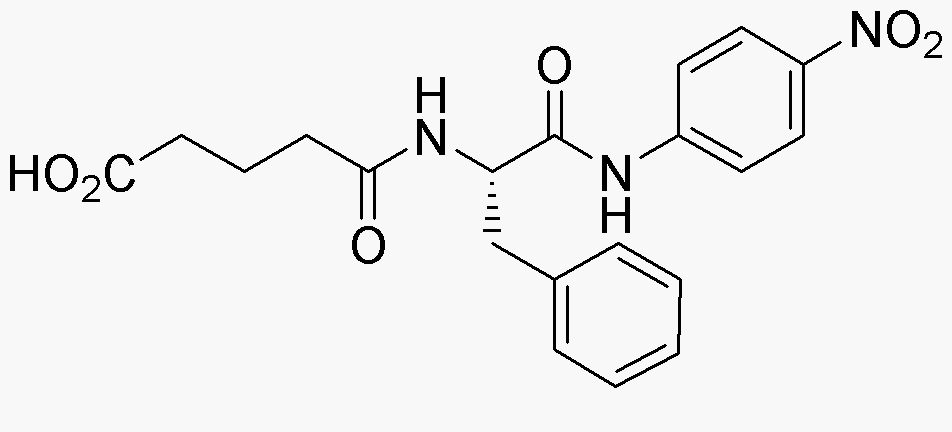Glutaryl-L-phenylalanine 4-nitroanilide is widely utilized in research focused on:
- Biochemical Assays: This compound serves as a substrate in enzyme assays, particularly for proteases. Its ability to mimic natural substrates allows researchers to study enzyme kinetics and inhibition effectively.
- Drug Development: In pharmaceutical research, it is used to evaluate the efficacy of new drugs targeting specific enzymes, helping to streamline the drug discovery process.
- Diagnostic Tools: The compound can be incorporated into diagnostic kits for detecting enzyme-related disorders, providing a reliable method for early diagnosis.
- Research on Protein Interactions: It aids in studying protein-ligand interactions, which is crucial for understanding cellular mechanisms and developing targeted therapies.
- Educational Purposes: This compound is often utilized in academic laboratories to teach students about enzyme activity and biochemical techniques, enhancing practical learning experiences.
General Information
Properties
Safety and Regulations
Applications
Glutaryl-L-phenylalanine 4-nitroanilide is widely utilized in research focused on:
- Biochemical Assays: This compound serves as a substrate in enzyme assays, particularly for proteases. Its ability to mimic natural substrates allows researchers to study enzyme kinetics and inhibition effectively.
- Drug Development: In pharmaceutical research, it is used to evaluate the efficacy of new drugs targeting specific enzymes, helping to streamline the drug discovery process.
- Diagnostic Tools: The compound can be incorporated into diagnostic kits for detecting enzyme-related disorders, providing a reliable method for early diagnosis.
- Research on Protein Interactions: It aids in studying protein-ligand interactions, which is crucial for understanding cellular mechanisms and developing targeted therapies.
- Educational Purposes: This compound is often utilized in academic laboratories to teach students about enzyme activity and biochemical techniques, enhancing practical learning experiences.
Documents
Safety Data Sheets (SDS)
The SDS provides comprehensive safety information on handling, storage, and disposal of the product.
Product Specification (PS)
The PS provides a comprehensive breakdown of the product’s properties, including chemical composition, physical state, purity, and storage requirements. It also details acceptable quality ranges and the product's intended applications.
Certificates of Analysis (COA)
Search for Certificates of Analysis (COA) by entering the products Lot Number. Lot and Batch Numbers can be found on a product’s label following the words ‘Lot’ or ‘Batch’.
*Catalog Number
*Lot Number
Certificates Of Origin (COO)
This COO confirms the country where the product was manufactured, and also details the materials and components used in it and whether it is derived from natural, synthetic, or other specific sources. This certificate may be required for customs, trade, and regulatory compliance.
*Catalog Number
*Lot Number
Safety Data Sheets (SDS)
The SDS provides comprehensive safety information on handling, storage, and disposal of the product.
DownloadProduct Specification (PS)
The PS provides a comprehensive breakdown of the product’s properties, including chemical composition, physical state, purity, and storage requirements. It also details acceptable quality ranges and the product's intended applications.
DownloadCertificates of Analysis (COA)
Search for Certificates of Analysis (COA) by entering the products Lot Number. Lot and Batch Numbers can be found on a product’s label following the words ‘Lot’ or ‘Batch’.
*Catalog Number
*Lot Number
Certificates Of Origin (COO)
This COO confirms the country where the product was manufactured, and also details the materials and components used in it and whether it is derived from natural, synthetic, or other specific sources. This certificate may be required for customs, trade, and regulatory compliance.


